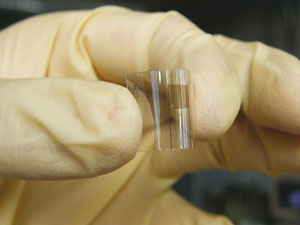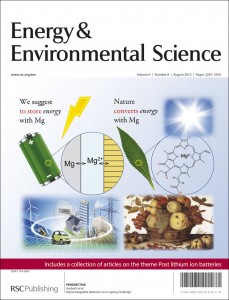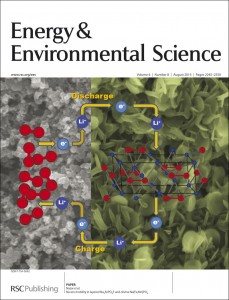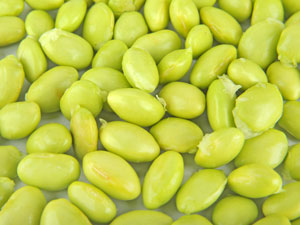This month sees the following articles in Energy & Environmental Science that are in the top 25 most accessed from April – June:
Progress in flexible energy storage and conversion systems, with a focus on cable-type lithium-ion batteries
Sang-Young Lee, Keun-Ho Choi, Woo-Sung Choi, Yo Han Kwon, Hye-Ran Jung, Heon-Cheol Shin and Je Young Kim
Energy Environ. Sci., 2013,6, 2414-2423
DOI: 10.1039/C3EE24260A
Graphene-based electrodes for electrochemical energy storage
Chaohe Xu, Binghui Xu, Yi Gu, Zhigang Xiong, Jing Sun and X. S. Zhao
Energy Environ. Sci., 2013,6, 1388-1414
DOI: 10.1039/C3EE23870A
Highly efficient dye-sensitized solar cells: progress and future challenges
Shufang Zhang, Xudong Yang, Youhei Numata and Liyuan Han
Energy Environ. Sci., 2013,6, 1443-1464
DOI: 10.1039/C3EE24453A
3D carbon based nanostructures for advanced supercapacitors
Hao Jiang, Pooi See Lee and Chunzhong Li
Energy Environ. Sci., 2013,6, 41-53
DOI: 10.1039/C2EE23284G
Low-temperature processed meso-superstructured to thin-film perovskite solar cells
James M. Ball, Michael M. Lee, Andrew Hey and Henry J. Snaith
Energy Environ. Sci., 2013,6, 1739-1743
DOI: 10.1039/C3EE40810H
From planar-heterojunction to n–i structure: an efficient strategy to improve short-circuit current and power conversion efficiency of aqueous-solution-processed hybrid solar cells
Zhaolai Chen, Hao Zhang, Xiaohang Du, Xiao Cheng, Xigao Chen, Yingying Jiang and Bai Yang
Energy Environ. Sci., 2013,6, 1597-1603
DOI: 10.1039/C3EE40481A
Development of alternative photocatalysts to TiO2: Challenges and opportunities
María D. Hernández-Alonso, Fernando Fresno, Silvia Suárez and Juan M. Coronado
Energy Environ. Sci., 2009,2, 1231-1257
DOI: 10.1039/B907933E
Light-trapping in dye-sensitized solar cells
Stephen Foster and Sajeev John
Energy Environ. Sci., 2013, Advance Article
DOI: 10.1039/C3EE40185E
Shape-tailored TiO2 nanocrystals with synergic peculiarities as building blocks for highly efficient multi-stack dye solar cells
Luisa De Marco, Michele Manca, Roberto Giannuzzi, Maria R. Belviso, P. Davide Cozzoli and Giuseppe Gigli
Energy Environ. Sci., 2013,6, 1791-1795
DOI: 10.1039/C3EE24345A
Challenges in the development of advanced Li-ion batteries: a review
Vinodkumar Etacheri, Rotem Marom, Ran Elazari, Gregory Salitra and Doron Aurbach
Energy Environ. Sci., 2011,4, 3243-3262
DOI: 10.1039/C1EE01598B
A membrane-free lithium/polysulfide semi-liquid battery for large-scale energy storage
Yuan Yang, Guangyuan Zheng and Yi Cui
Energy Environ. Sci., 2013,6, 1552-1558
DOI: 10.1039/C3EE00072A
Graphene and its derivatives for the development of solar cells, photoelectrochemical, and photocatalytic applications
Da Chen, Hao Zhang, Yang Liu and Jinghong Li
Energy Environ. Sci., 2013,6, 1362-1387
DOI: 10.1039/C3EE23586F
Biomass-derived electrocatalytic composites for hydrogen evolution
Wei-Fu Chen, Shilpa Iyer, Shweta Iyer, Kotaro Sasaki, Chiu-Hui Wang, Yimei Zhu, James T. Muckerman and Etsuko Fujita
Energy Environ. Sci., 2013,6, 1818-1826
DOI: 10.1039/C3EE40596F
Flexible graphene–polyaniline composite paper for high-performance supercapacitor
Huai-Ping Cong, Xiao-Chen Ren, Ping Wang and Shu-Hong Yu
Energy Environ. Sci., 2013,6, 1185-1191
DOI: 10.1039/C2EE24203F
A high-performance supercapacitor-battery hybrid energy storage device based on graphene-enhanced electrode materials with ultrahigh energy density
Fan Zhang, Tengfei Zhang, Xi Yang, Long Zhang, Kai Leng, Yi Huang and Yongsheng Chen
Energy Environ. Sci., 2013,6, 1623-1632
DOI: 10.1039/C3EE40509E
Lithium–oxygen batteries: bridging mechanistic understanding and battery performance
Yi-Chun Lu, Betar M. Gallant, David G. Kwabi, Jonathon R. Harding, Robert R. Mitchell, M. Stanley Whittingham and Yang Shao-Horn
Energy Environ. Sci., 2013,6, 750-768
DOI: 10.1039/C3EE23966G
Photoelectrochemical reduction of nitrates at the illuminated p-GaInP2 photoelectrode
Heli Wang and John A. Turner
Energy Environ. Sci., 2013,6, 1802-1805
DOI: 10.1039/C3EE40745D
Graphene based new energy materials
Yiqing Sun, Qiong Wu and Gaoquan Shi
Energy Environ. Sci., 2011,4, 1113-1132
DOI: 10.1039/C0EE00683A
Stabilizing inorganic photoelectrodes for efficient solar-to-chemical energy conversion
Syed Mubeen, Joun Lee, Nirala Singh, Martin Moskovits and Eric W. McFarland
Environ. Sci., 2013,6, 1633-1639
DOI: 10.1039/C3EE40258D
High-efficiency polymer solar cells with a cost-effective quinoxaline polymer through nanoscale morphology control induced by practical processing additives
Yiho Kim, Hye Rim Yeom, Jin Young Kim and Changduk Yang
Energy Environ. Sci., 2013,6, 1909-1916
DOI: 10.1039/C3EE00110E
High photo-electrochemical activity of thylakoid–carbon nanotube composites for photosynthetic energy conversion
Jessica O. Calkins, Yogeswaran Umasankar, Hugh O’Neill and Ramaraja P. Ramasamy
Energy Environ. Sci., 2013,6, 1891-1900
DOI: 10.1039/C3EE40634B
Review of solutions to global warming, air pollution, and energy security
Mark Z. Jacobson
Energy Environ. Sci., 2009,2, 148-173
DOI: 10.1039/B809990C
High performance hybrid solar cells sensitized by organolead halide perovskites
Bing Cai, Yedi Xing, Zhou Yang, Wen-Hua Zhang and Jieshan Qiu
Energy Environ. Sci., 2013,6, 1480-1485
DOI: 10.1039/C3EE40343B
Carbon nanotubes for lithium ion batteries
Brian J. Landi, Matthew J. Ganter, Cory D. Cress, Roberta A. DiLeo and Ryne P. Raffaelle
Energy Environ. Sci., 2009,2, 638-654
DOI: 10.1039/B904116H
Uniform V2O5 nanosheet-assembled hollow microflowers with excellent lithium storage properties
An Qiang Pan, Hao Bin Wu, Lei Zhang and Xiong Wen (David) Lou
Energy Environ. Sci., 2013,6, 1476-1479
DOI: 10.1039/C3EE40260F
Why not take a look at the articles today and blog your thoughts and comments below
Fancy submitting an article to EES? Then why not submit to us today!















 Scientists from Spain have found a catalyst that can
Scientists from Spain have found a catalyst that can 
